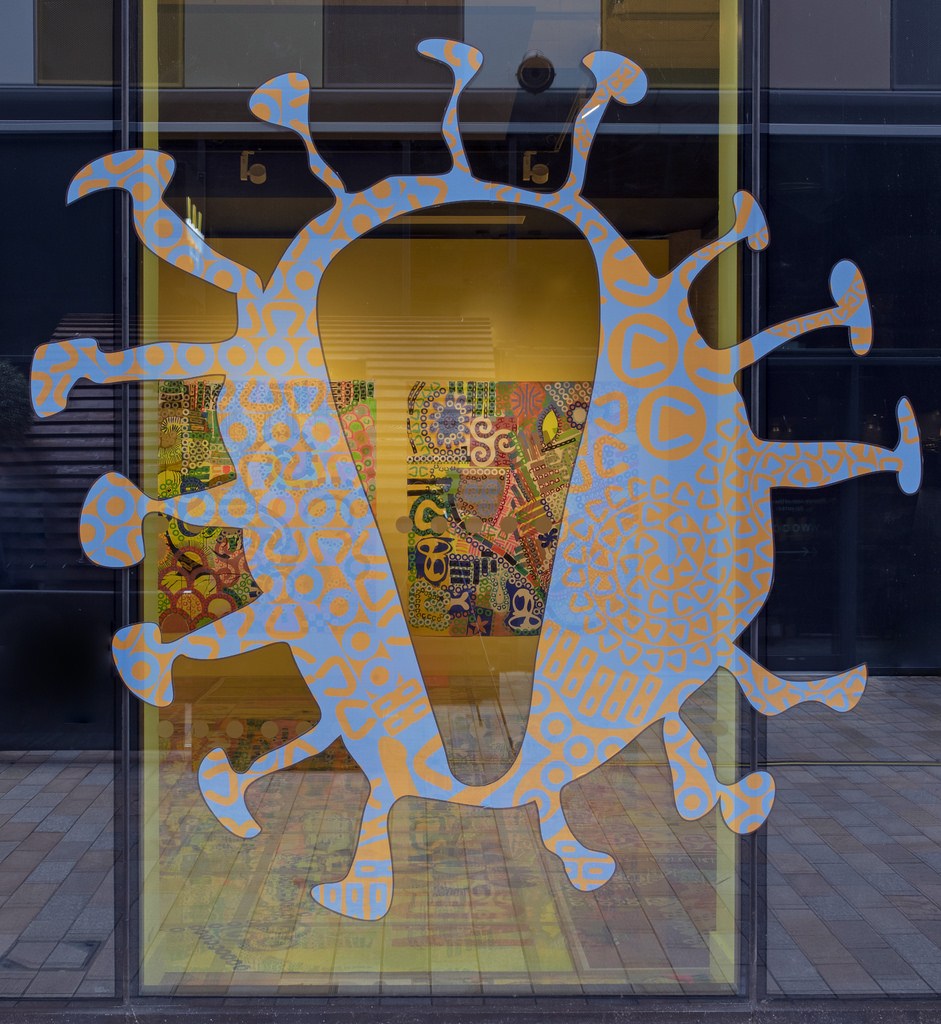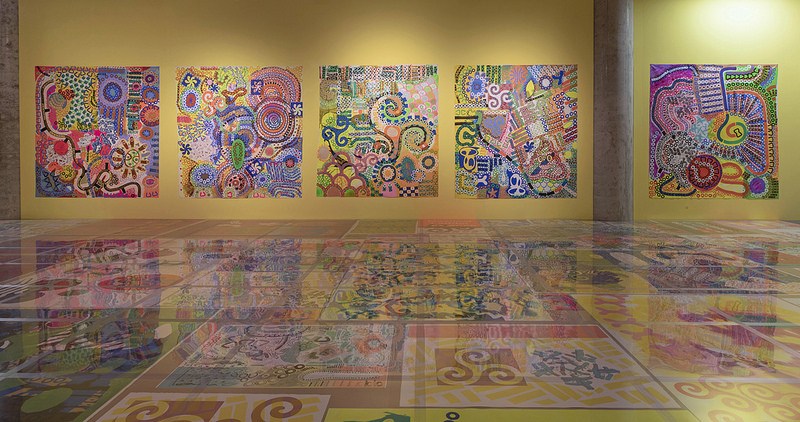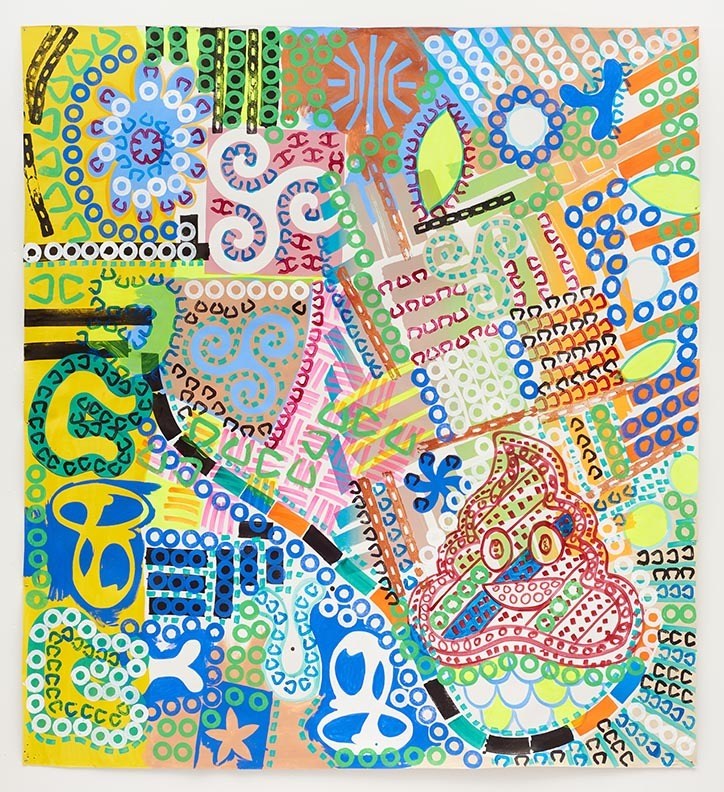In 2015, London-based artist John Walter premiered his multimedia project Alien Sex Club, which sought to explore the relationship between visual culture and HIV as well as open a public discussion about this often-taboo topic. But even after Alien Sex Club had its final exhibitions, Walter felt that there was still more to say on the connection between art and the nature of viruses.
Three years later, Walter, alongside his collaborator at University College London (UCL), Professor Greg Towers, presented his new multimedia project CAPSID, featuring a short film titled A Virus Walks Into a Bar, which pulls the “bar” motif of British soap operas to present an analogous tale of how HIV enters human cells and destroys them from within [1].
Walter spent those three years in UCL’s Towers Lab, studying under Professor Towers to better understand the interactions between a virus and its host, specifically HIV-1 and the effect of AIDS on the human body’s immune system. His meticulous research is shown in the presentation of the HIV capsid, which is a protein shell surrounding the virus and acting as a “sphere of invisibilty,” preventing its DNA from being detected by the immune system [1].
In A Virus Walks Into a Bar, the HIV character within his capsid is initially barred from entry into the bar (white blood cell) by the bouncers, figuring him to be a troublemaker, but is allowed in by a few friendly chaps who presume that the new guy just needs a few pints to warm him up. As HIV’s DNA progresses through the bar, with some pushback by other patrons (cytoplasmids, proteins, etc.), he eventually reaches the “bartender” – the cell’s nucleus. And then, he singlehandedly takes control of the cell by replacing the “bartender,” allowing himself to replicate and take over more “bars” [1].
 Although the idea of equating a real life visual motif, such as a pub, to a microscopic topic like HIV seems too eccentric to be factually sound, CAPSID is, at its core, scientifically rooted. During its production, Walter became invested in the scientific basis of Towers’ research, immersing himself in intellectual discourse with undergraduate students and participating in the lab’s science outreach programs. This was a unique opportunity for Professor Towers’ team to approach their research from different perspectives, and challenged them to introspectively question their own investigations. Professor Towers himself actively engaged in the discussion with Walter about the artistic merit of his research as well. This surprising role-reversal produced spectacular results, as Walter mixed elements of scientific jargon and factual observations to craft other analogous artifacts for his pieces [1].
Although the idea of equating a real life visual motif, such as a pub, to a microscopic topic like HIV seems too eccentric to be factually sound, CAPSID is, at its core, scientifically rooted. During its production, Walter became invested in the scientific basis of Towers’ research, immersing himself in intellectual discourse with undergraduate students and participating in the lab’s science outreach programs. This was a unique opportunity for Professor Towers’ team to approach their research from different perspectives, and challenged them to introspectively question their own investigations. Professor Towers himself actively engaged in the discussion with Walter about the artistic merit of his research as well. This surprising role-reversal produced spectacular results, as Walter mixed elements of scientific jargon and factual observations to craft other analogous artifacts for his pieces [1].
Although, this is not as surprising as one may first think; much like 9 Evenings by E.A.T., the artist and the scientist seemed to share an understanding that they each possess elements of Techné and Agnos, and that equal contribution by both parties would form a greater whole result [2].
 In one portion of his exhibit, Walter took the likenesses of pop culture characters and corporate logos to act as co-factors (the protein particles in cells that allow the capsid access to the nucleii). In another, plush toys and silicon foreskin are framed as the defense mechanism in cells that detect and kill foreign material. Through these paintings and installations, Walter’s work not only uncovers new ways of expressing how HIV behaves, but presents his findings in a way that the non-scientifically inclined can understand. Additionally, with the collaboration between John Walter and Professor Greg Towers, this exhibition displays an uncommon situation in new media – the infection of science into the art world, and art into the oft-secluded science community [1].
In one portion of his exhibit, Walter took the likenesses of pop culture characters and corporate logos to act as co-factors (the protein particles in cells that allow the capsid access to the nucleii). In another, plush toys and silicon foreskin are framed as the defense mechanism in cells that detect and kill foreign material. Through these paintings and installations, Walter’s work not only uncovers new ways of expressing how HIV behaves, but presents his findings in a way that the non-scientifically inclined can understand. Additionally, with the collaboration between John Walter and Professor Greg Towers, this exhibition displays an uncommon situation in new media – the infection of science into the art world, and art into the oft-secluded science community [1].
The final exhibition of Walter’s CAPSID was displayed on January 6, 2019, but his official site with more information can be found here.
Sources:
[1] Regine. “A Virus Walks into a Bar. Or How Art and Science Can Infect Each Other.” We Make Money Not Art, 4 Dec. 2018, http://we-make-money-not-art.com/a-virus-walks-into-a-bar-or-how-art-and-science-can-infect-each-other/.
[2] Shanken, Edward A. Art and Electronic Media. Phaidon, 2014.
Walter, John. CAPSID | Multi-Media Maximalist Installation by London-Based British Artist John Walter, http://www.johnwalter.net/capsid/.






